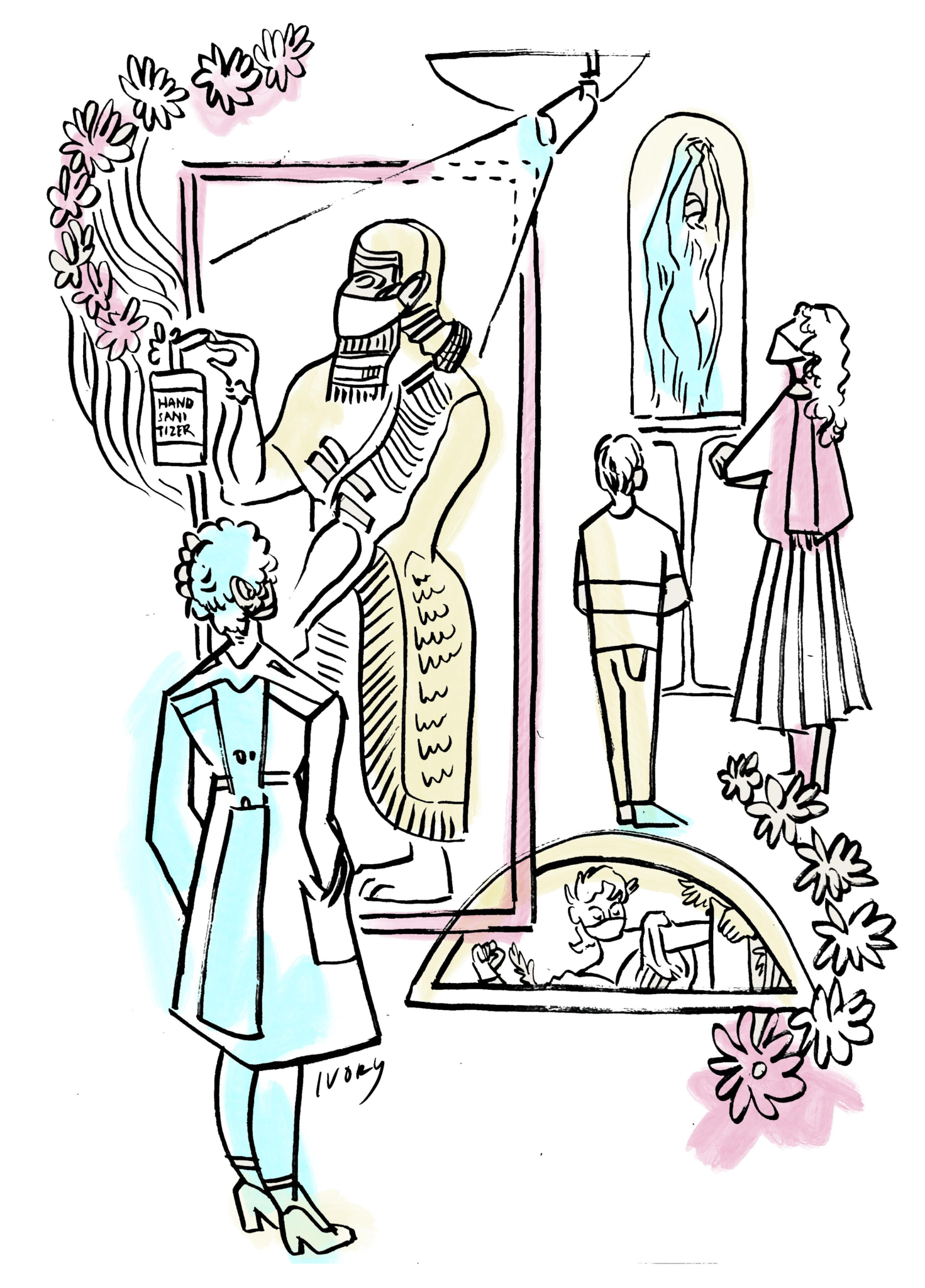
Ivory Fu
On Friday, Sept. 25, the Yale University Art Gallery will reopen its doors to the public for the first time since March, following Connecticut and Yale University health protocols.
The YUAG’s reopening will provide visitors access to three special exhibitions: “Reckoning with ‘The Incident’: John Wilson’s Studies for a Lynching Mural,” “James Prosek: Art, Artifact, Artifice” and “Place, Nations, Generations, Beings: 200 Years of Indigenous North American Art.” The exhibitions are on view every Friday from 3 to 7 p.m., and every Saturday and Sunday from 12 to 4 p.m.
Stephanie Wiles, the YUAG’s director, noted that all visitors must wear masks and observe social distancing.
“We have worked very hard to meet the state of Connecticut and Yale University guidelines,” Wiles said. “We are eager to ensure that all visitors feel comfortable and safe on their first trip back to the Gallery.”
The YUAG’s safety measures include restricted access to exhibitions, reduced capacity and a free timed-entry ticket for all visitors.
According to the Gallery’s press release, visitors can now reserve tickets in advance on the gallery’s website. In addition, a limited number of walk-in tickets will be available on a first-come, first-served basis each day. Upon entry, visitors will follow an approximately hour-long guided tour of the three exhibitions. They can return multiple times over the course of the gallery’s reopening.
Upon entering the museum, viewers will first walk through the Wilson exhibition, which features a mural titled “The Incident” that depicts a racial terror lynching of African Americans by the Ku Klux Klan. According to the YUAG website, the exhibition aims to advance the national conversation about racial violence in the United States. The works on display can be jarring to visitors while encouraging them to visually confront themes of social justice.
Elisabeth Hodermarsky, the curator of prints and drawings at the YUAG, said that even though Wilson’s art was created decades ago, the exhibition still feels relevant.
“It’s both a timely group of objects and a timeless reminder of the realities of racial violence and terror in this country — and a testament to the power of art to move us very deeply and to spur us forward to confront the legacies of lynching,” Hodermarsky said.
Hodermarsky added that the socio-political atmosphere in the country — after George Floyd and other Black Americans’ deaths at the hands of police officers — makes the exhibition important in sparking conversations on college campuses.
Due to the new safety regulations, attending the exhibition is a timed and solitary experience that “might encourage more intimate looking and a more concentrated experience,” Hodermarsky said.
After viewing the Wilson exhibition, visitors will have the opportunity to view “Prosek: Art, Artifact, Artifice.” The exhibition shows Prosek’s work alongside objects from the YUAG, the Yale Center for British Art and the Yale Peabody Museum of Natural History.
Laurence Kanter, chief curator and the Lionel Goldfrank III curator of European art at the YUAG, noted that the diverse array of objects pushes viewers to see the natural world in a different light. Kanter said the exhibition includes an “eclectic” mixture of samples, including a color spectrum comprising more than 200 bird specimens.
“Every object is chosen to be so beautiful and so striking that everyone will find something or many things to be fascinated by,” Kanter said.
Besides introducing visitors to the intricacies of the natural world, Kanter hopes the Prosek exhibition will encourage people to see the world “more richly” and in more thoughtful ways.
At the final stop of their visit, viewers will be presented with a range of Indigenous voices and stories in the Indigenous North American Art exhibition. This student-curated exhibition contains over 75 artworks dating to the 19th century.
The exhibition, which presents pieces as works of art rather than historical artifacts, is guided by four main themes. The show, according to the YUAG website, seeks to highlight Indigenous people’s connections to their land, the way objects express sovereignty, how artistic traditions are passed down generations and the relationship nations have with animals, plants and cosmological beings. The exhibition represents over 40 Indigenous nations.
The three special exhibitions have been extended through February 2021. Wiles said if the initial phase of reopening is successful, the YUAG will gradually open its permanent collections to the public and expand its hours.
“We are all looking forward to welcoming the community back into the gallery on Friday afternoon,” Wiles said.
The YUAG is located at 1111 Chapel St.
Cynthia Sutanto | cynthia.sutanto@yale.edu







